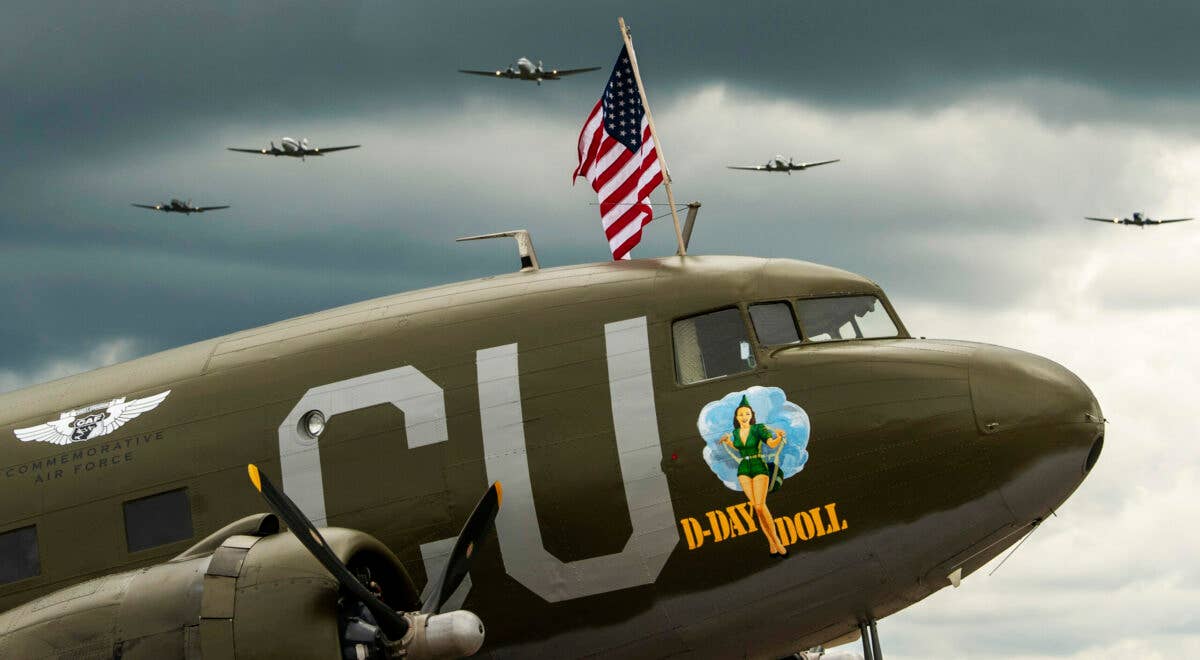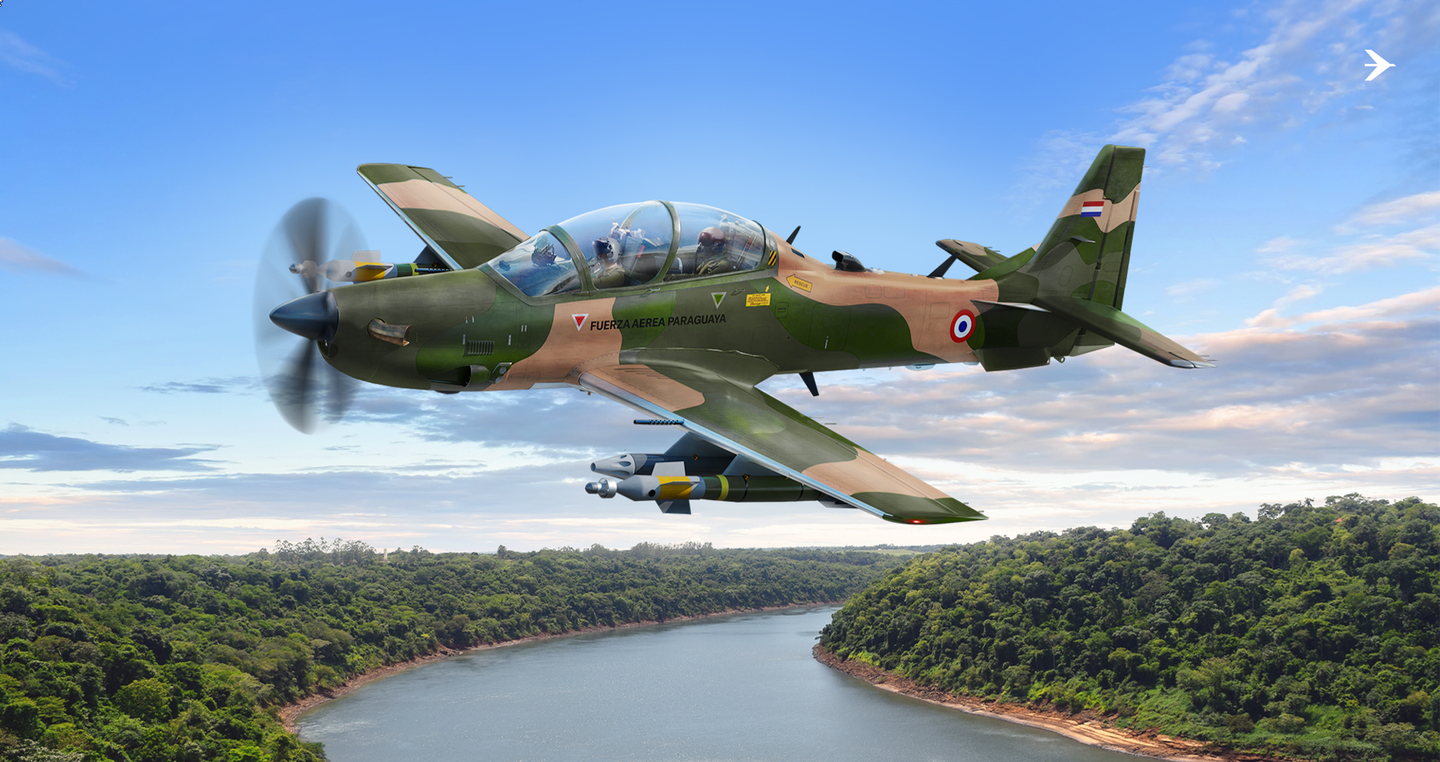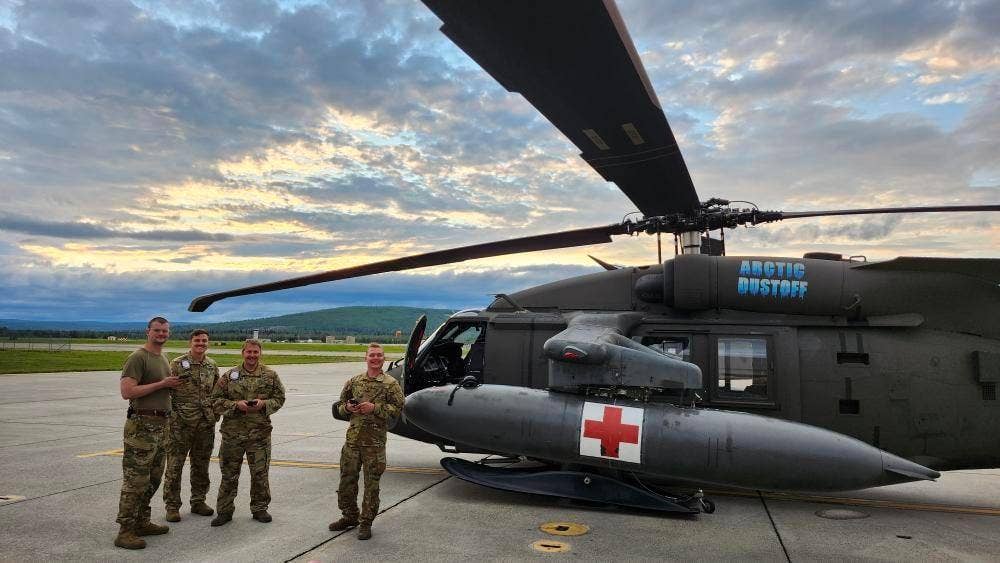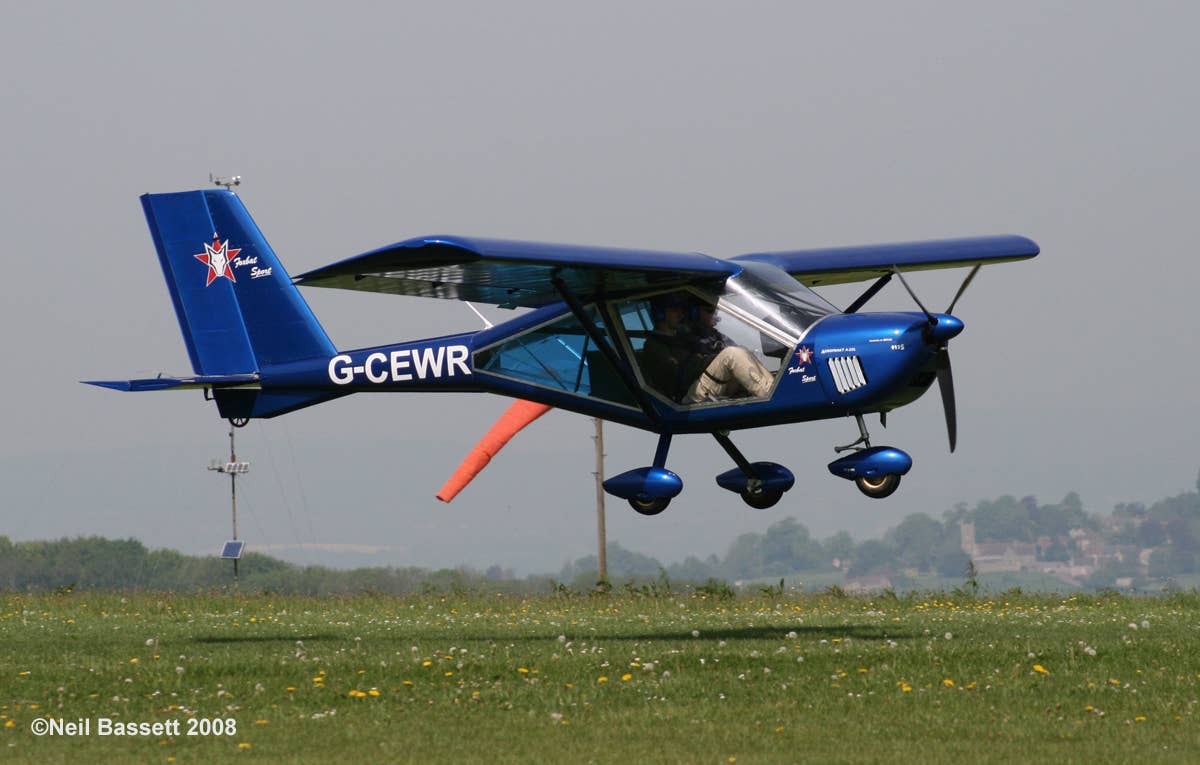U.S. Air Force Marks 75 Years: 5 Things To Know
In the wake of WWII, the Department of the Air Force became a stand-alone service on September 18, 1947, created by the National Security Act signed into law by President Harry Truman.

WIESBADEN, Germany — Five C-47 Skytrains fly in formation over the D-Day Doll, a C-47, on the flight line at Clay Kaserne, Germany, June 10, 2019. The C-47s were conducting a fly-over for the 70th anniversary of the Berlin Airlift. [Courtesy: U.S. Air Force ]
Seventy-five years ago and as the nation rebounded from World War II, the United States Air Force was created.
It was, according to many military and aviation observers, a necessity for a new era of national defense.
"The very heart and key to our national defense is a top-notch, professional air force, sitting constantly on the alert in the ready room," publisher William Ziff wrote in the September 1947 issue of FLYING. "It must be backed by an industry geared to an instant emergency. At its stride must be the biggest possible air transport system, capable at once of moving men and materials with the greatest efficiency and speed."
In celebration of the 75th anniversary of the service, here are five things you should know about the U.S. Air Force:
1. The success of American air power during World War II led to the formation of the Department of the Air Force.
In the summer of 1941 and with the threat of war emerging, the Army Air Corps reformed into the Army Air Forces (AAF) as a response for a growing military aviation mission. Following its successes in World War II, however, the U.S. military was faced with once again restructuring. On September 18, 1947, the National Security Act of 1947, signed months prior by President Harry Truman, went into effect creating the Department of the Air Force, as well as the Department of Defense and the Central Intelligence Agency.
On this date, Army Air Forces’ (AAF) personnel aircraft were transferred to the new service: the United States Air Force.
"In its expansion during World War II, the AAF became the world's most powerful air force," ramping up to a peak of nearly 2.4 million personnel and 80,000 aircraft by 1944, according to Air Force historians. Following the war, the creation of an independent Air Force was "virtually inevitable," service historians said, noting that stringent postwar budgets reset new service goals to a fraction of wartime levels, to 400,000 personnel and 8,000 aircraft.
2. An Air Force pilot changed everything we know about flight.
One pilot who made the transition to the Air Force—Capt. Charles "Chuck" Yeager—ended up changing everything.
On October 14, 1947, Yeager altered what was known about the possibilities of flight when he piloted the first supersonic flight, breaking the sound barrier at Mach 1.06 while flying the National Advisory Committee for Aeronautics experimental bullet-shaped Bell X-1, Glamorous Glennis, at an altitude of 45,000 feet.
Not making the transition, however, were Women Airforce Service Pilots (WASP). During World War II, more than 1,000 female civilian WASP aviators ferried and served as flight instructors for more than 70 types of military aircraft among U.S. air bases, freeing up combat pilots for the war. In late 1944, the organization was disbanded.
Up until the mid-1970s, opportunities remained very limited for women in the U.S. Air Force, as well as the other services. While women gained the ability to serve in the Air Force in 1948, ROTC and military academies, such as the U.S. Air Force Academy, weren’t options. In 1976, a new law allowing women access to the U.S. Service Academies went into effect and the Air Force Academy opened its doors to women cadets. It would later graduate 157 women in its first female class in 1980. At the same time, the Air Force also opened up flight training for women through a test program.
3. One of the earliest USAF missions was to deliver post-war humanitarian aid.
When the cold shadow of World War II fell upon civilians in eastern Germany in the summer of 1948, the Air Force launched "Operation Vittles," a nearly year-long effort to deliver food and supplies into Soviet-controlled areas.
During the Berlin Airlift, Air Force pilot Lt. Gail Halvorsen noticed crowds of hungry children gathered near a military airfield. He shared what candy he had in his pockets, and vowed to return with more. Halvorsen made good on the promise and earned the nickname "Candy Bomber," by dropping the children sweets attached to parachutes out of his Douglas C-54 and wiggling his wings to say hello to the children awaiting below. By the end of the Berlin Airlift, "Operation Little Vittles," spearheaded by Halvorsen, dropped more than 23 tons of candy.
4. The Air Force's history is filled with iconic fighters.
The Air Force's fleet includes some of the most iconic aircraft ever built, including the AAF- inherited North American P-51 Mustang that flew as a fighter and fighter-bomber in both World War II and the Korean War. The aircraft was sleek, low-drag, and featured a streamlined wing that gave it a maximum speed of nearly 390 mph (339 knots) and a combat range of about 750 miles (652 nm).
During the Korean War, North American's F-86 Sabre offered Air Force fighter pilots a boost of speed and improved handling. Powered by a General Electric J47-GE-1 engine, the fighter set a world speed record of 671 mph in 1948, according to the Smithsonian National Air & Space Museum in Washington, D.C.
By the 1950s, the service was focused on innovation. The 1950's era Century Series of fighters represented rapid development and, sometimes failure, according to the Center for Strategic and International Studies (CSIS).
"The original Century Series produced at least 10 new designs that included the first supersonic fighter, the first tactical aircraft to carry nuclear weapons, and the first aircraft designed to truly integrate radar and weapons systems into the design concept," the CSIS said in a 2019 report. "Despite this innovation, timelines to field new designs were rapid: prototypes sometimes flew within five years of development start, and over 5,000 aircraft were produced in one decade."
By the early 1960s, the Air Force adopted a variant of the U.S. Navy's McDonnell Douglas F-4 Phantom II multi-role fighter capable of bombing missions with twice the armament load of a World War II-era B-17. In 1979 and little more than three decades into being a stand-alone service, the Air Force began operating the Lockheed Martin F-16 fighter capable of speeds of 1,500 mph (Mach 2 at altitude) with a range of more than 2,000 miles ferry range (1,740 nm).
5. Formation of an independent Air Force spurred a massive fleet of bombers.
"Independence was extremely important [and] gave them both the increased budget authority they need to establish the massive fleets of bomber aircraft they thought were necessary," Michael Hankins, curator of U.S. Air Force History at the Smithsonian National Air & Space Museum in Washington, D.C., told FLYING. "This is strengthened even more when [President Dwight] Eisenhower comes into office and essentially makes the Air Force the core component of his strategies of deterrence and massive retaliation."
During World War II, U.S. bombers gained fame for their performance. The Boeing B-17 Flying Fortress was capable of carrying up to 13 machine guns. "While it lacked the range and bomb load of its contemporary B-24 Liberator, the B-17 became the more famous of the two due to the many tales of B-17s bringing their crews back home despite heavy damage," the Air Mobility Command Musuem at Dover Air Force Base, Delaware, notes.
The Boeing B-29 Superfortresses transitioned from World War II bomber to other functions during Korea, such as in-flight refueling, anti-submarine patrols, and search and rescue.
But perhaps it's the B-52 Stratofortress—the Air Force's oldest jet-powered bomber—that really embodies the Air Force's duration and legacy. The bomber first entered service in the Air Force in April 1952. Re-engining, which began last year, means that the more than 70 B-52 aircraft remaining in the fleet could still be flying when they turn 100 years old, sharing the skies with the forthcoming B-21 Raider.
“Air Force trailblazer General Hap Arnold wrote, ‘We must think in terms of tomorrow,’” Air Force Chief of Staff Gen. C.Q. Brown Jr. said during a recent event celebrating the anniversary in Washington, D.C. “For 75 years that’s exactly what our Airmen have been doing. By envisioning tomorrow, they have found new ways to make the impossible…possible.”

Subscribe to Our Newsletter
Get the latest FLYING stories delivered directly to your inbox






